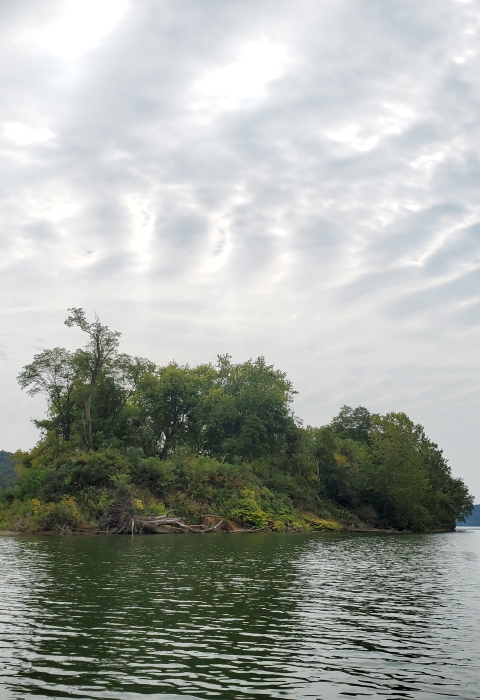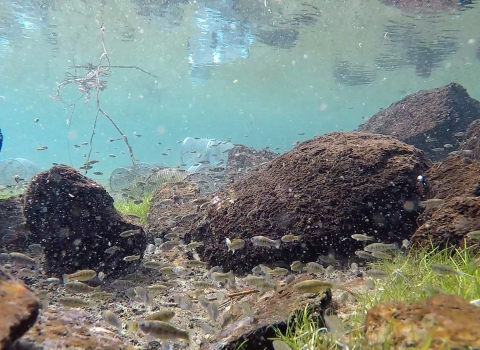During the 19th century, this high profile island was cleared and used for farming grain and turkeys. A farmhouse was erected by Adam Williamson (and an alternative name for the island, on old maps, is “John Williamson’s Island”). Later, a Mr. and Mrs. Henry occupied the house and took care of the government’s navigation lighthouse, located at the downriver end of the island (the light is no longer standing, due to rapid erosion of the island).
Tall oil derricks dotted the island during the oil boom of the late 19th and early 20th centuries. Some of the well casing are still apparent.
Charles Henry had lived his entire life on Grandview Island and was the keeper of the government light at the island’s toe. He lived in a cabin with his brother Pat. In September, 1930, a grizzly murder was carried out on Grandview Island. A three year old child named Garland Bailey was murdered while the mother was passed out drunk on the beach, the child’s body dumped in the Ohio River. The Henry brothers and two other men confessed to the crime. The mother was also charged with murder. The case was a local sensation; wild rumors began to circulate that the brothers were modern day bluebeards, and investigations were begun to examine the possibility the brothers had lured a number of other women and young girls to their death. Their cabin was found to contain quantities of random women’s clothing, including hats, shoes, dresses and other bits of apparel. Several years earlier, the body of a man had been found on the island beach with a bullet in his head; that crime had never been explained, and the brothers were suddenly being implicated in this, as well.
Island Access: Paden City, WV, public access ramp at Paden City Park off SR 2



